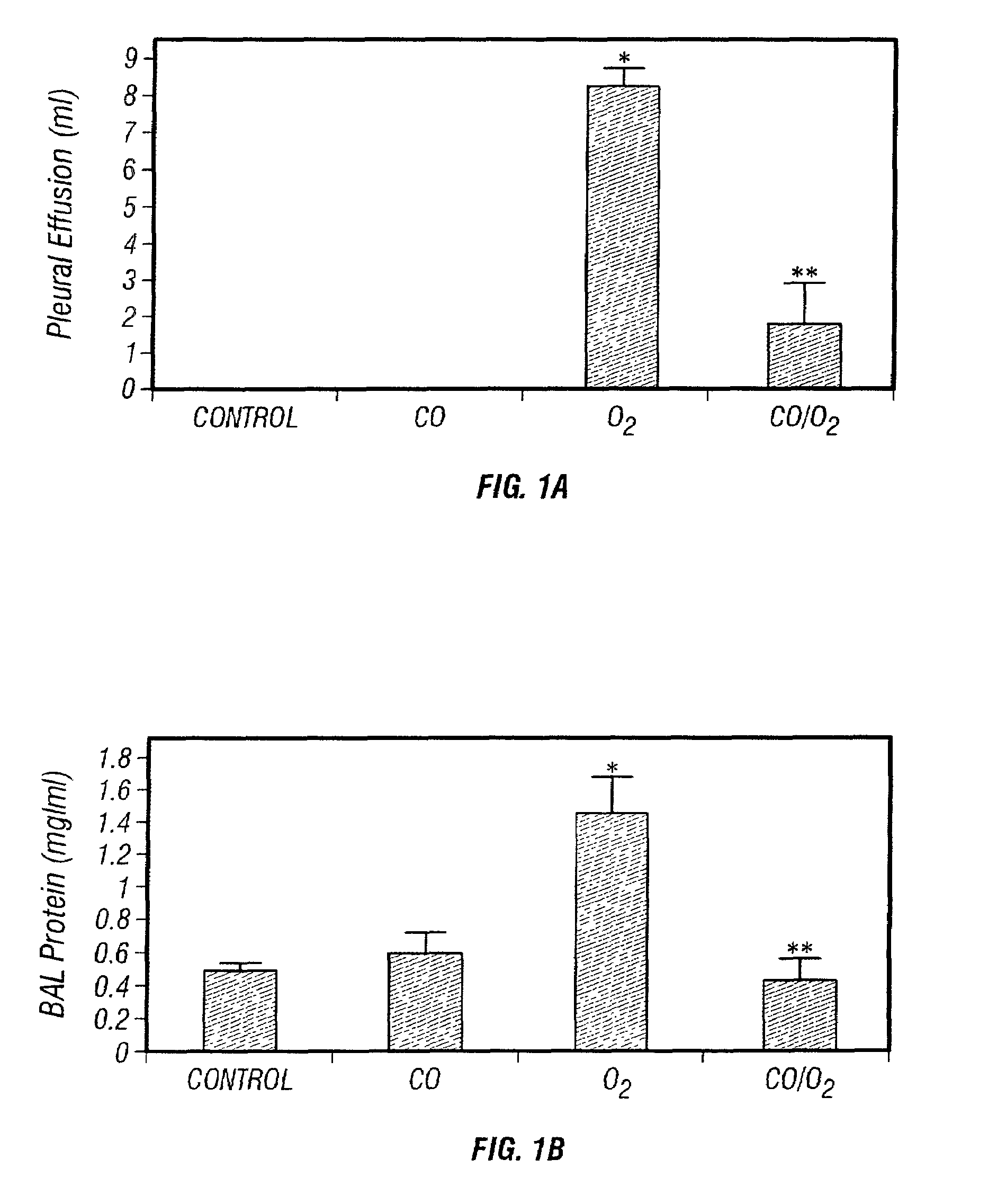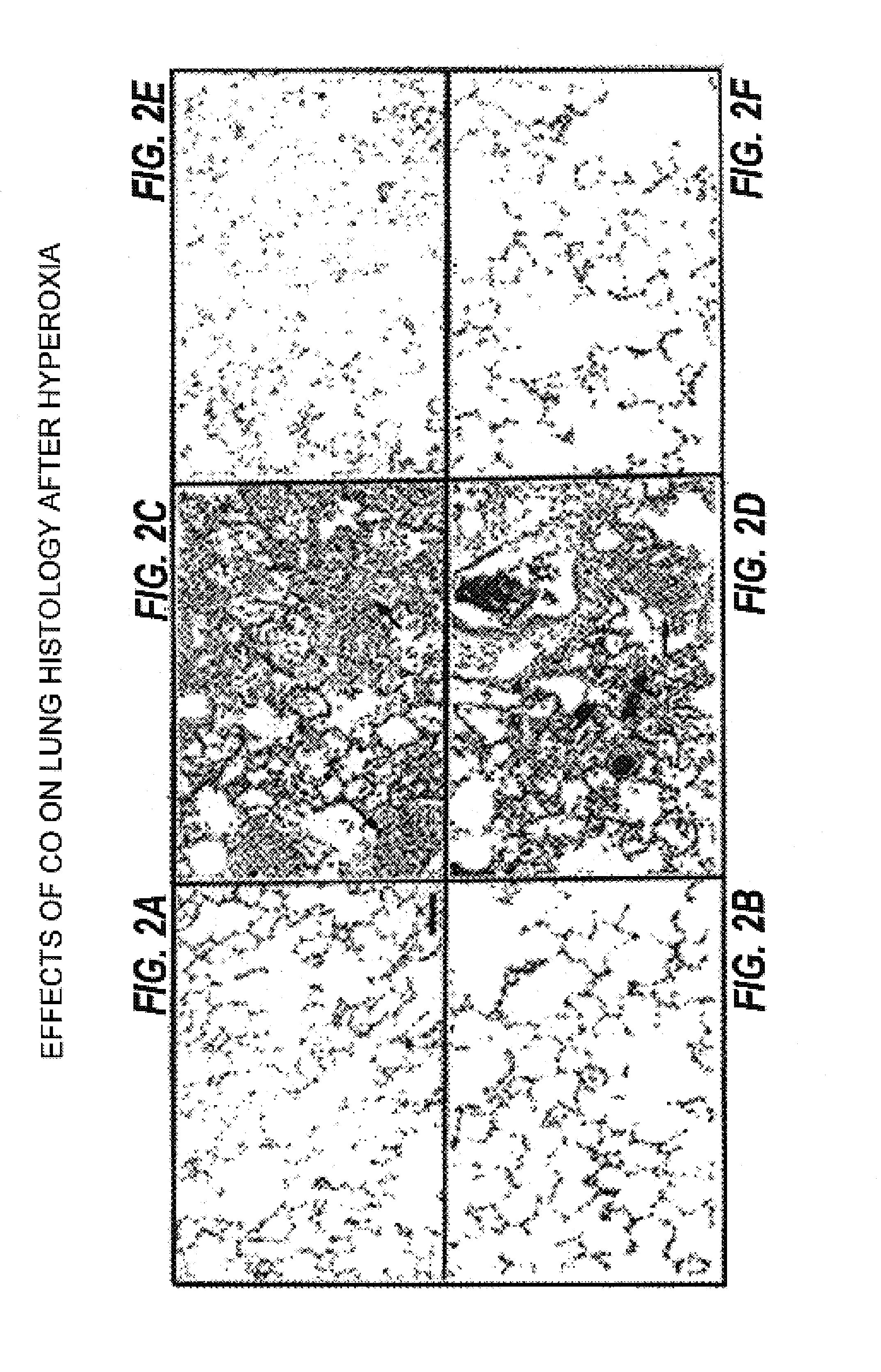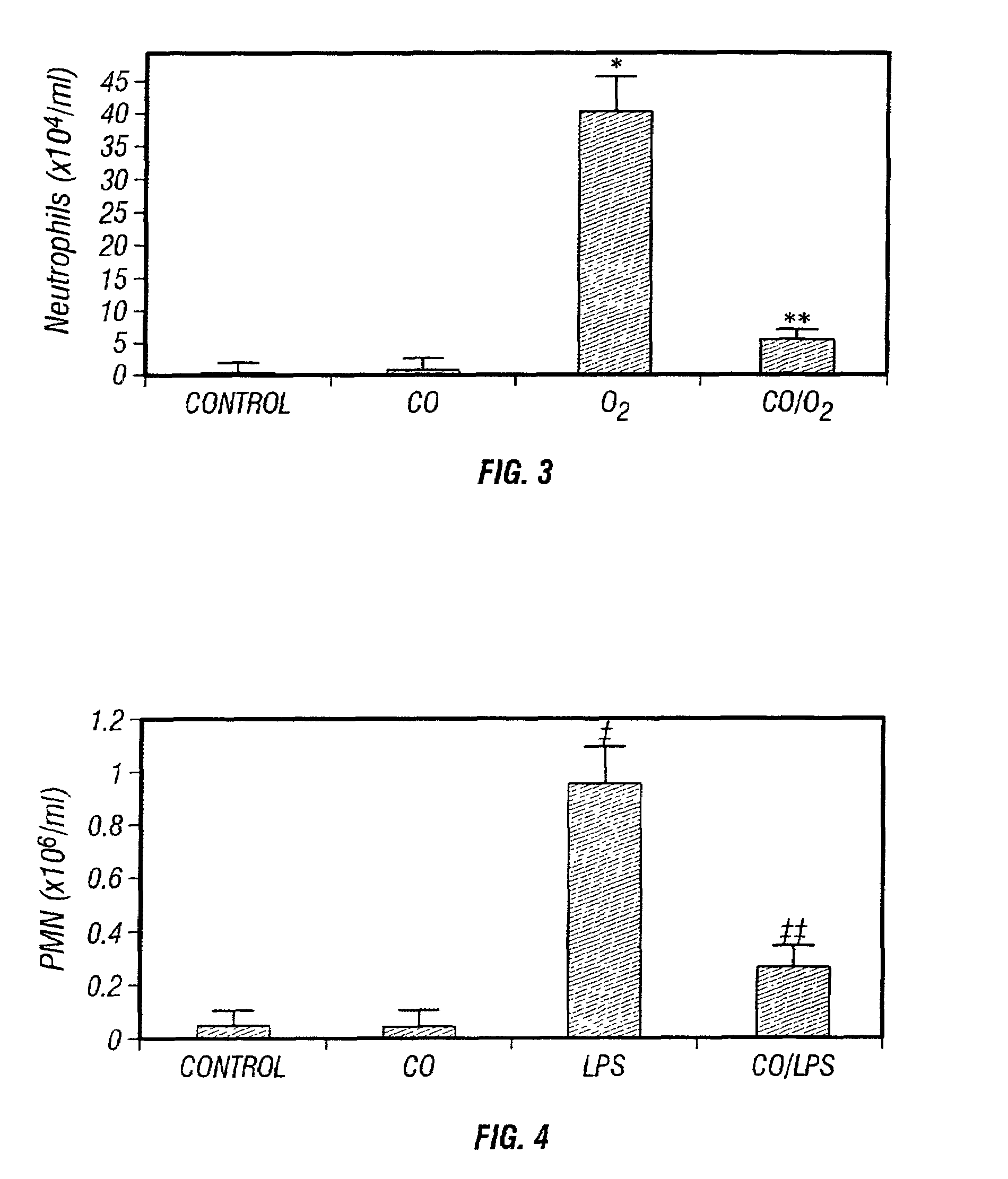Carbon monoxide as a biomarker and therapeutic agent
a technology of carbon monoxide and biomarkers, applied in the field of carbon monoxide as a biomarker and therapeutic agent, can solve the problems of no data in the literature substantiating a protective role, and achieve the effects of reducing, inhibiting or reducing the formation of reactive oxygen, and preventing or reducing the likelihood of damag
- Summary
- Abstract
- Description
- Claims
- Application Information
AI Technical Summary
Benefits of technology
Problems solved by technology
Method used
Image
Examples
examples
Evidence that CO Induces Tolerance to Lethal Hyperoxia and Oxidative Stress
[0051]In the following example, the effect of low dose administration of CO in hyperoxia in rats was assessed. In the examples presented, there is a demonstration that animals which were exposed to a low concentration of CO exhibit marked tolerance to otherwise lethal hyperoxia in vivo. The increased survival was associated with marked inhibition of hyperoxia-induced lung injury as assessed by pleural effusion and protein accumulation in the airways. Histological analysis of the lungs after hyperoxia demonstrates severe lung airway and parenchymal inflammation, fibrin deposition, and pulmonary edema. In contrast, the lungs of rats exposed to hyperoxia in the presence of CO were completely devoid of injury or inflammation. Neutrophil influx in to the airways of the lung, a reliable marker of oxidant-induced lung injury, and total lung apoptotic index were strikingly reduced in animals exposed to hyperoxia in t...
example 2
Studies on the Anti-Inflammatory Effects of Carbon Monoxide involving the Mitogen Activated Protein Kinase Pathway
[0068]These studies were performed and are presented to describe the anti-inflammatory effects which carbon monoxide (CO), a by-product of heme catabolism mediates at low concentration pursuant to the present invention. In particular, low concentrations of CO differentially and selectively inhibits the expression of LPS-induced pro-inflammatory cytokines TNF-α, IL-1β, and MIP-1β and augments the LPS-induced expression of the anti-inflammatory cytokine IL-10. As a consequence of these studies, it is believed that CO plays an important protective role in inflammatory disease states with therapeutic implications for the treatment of sepsis, septic shock and related conditions.
[0069]Using this well established model of LPS-induced inflammation, we tested the hypothesis that CO, one of three major end products following the catabolism of heme by HO, exerts potent anti-inflamm...
PUM
 Login to View More
Login to View More Abstract
Description
Claims
Application Information
 Login to View More
Login to View More - R&D
- Intellectual Property
- Life Sciences
- Materials
- Tech Scout
- Unparalleled Data Quality
- Higher Quality Content
- 60% Fewer Hallucinations
Browse by: Latest US Patents, China's latest patents, Technical Efficacy Thesaurus, Application Domain, Technology Topic, Popular Technical Reports.
© 2025 PatSnap. All rights reserved.Legal|Privacy policy|Modern Slavery Act Transparency Statement|Sitemap|About US| Contact US: help@patsnap.com



